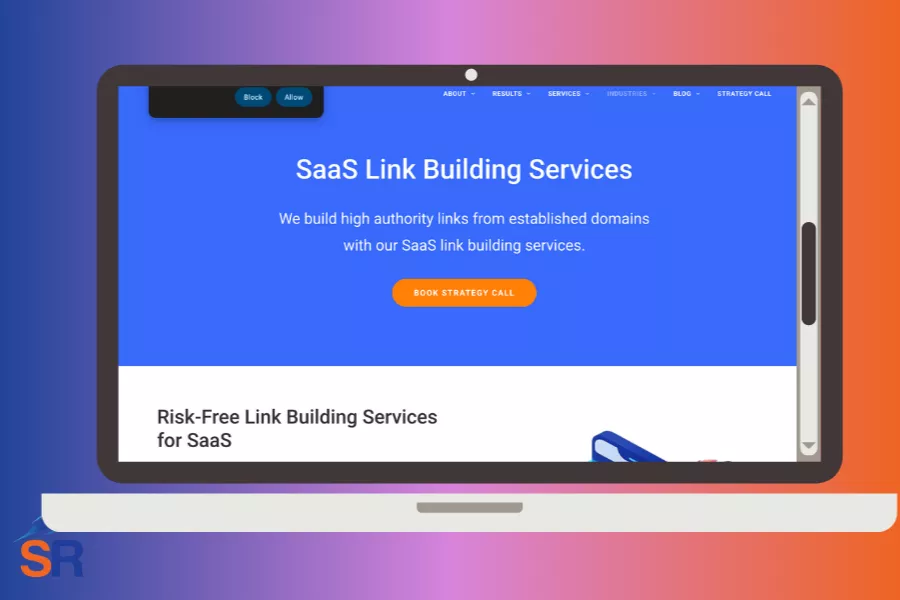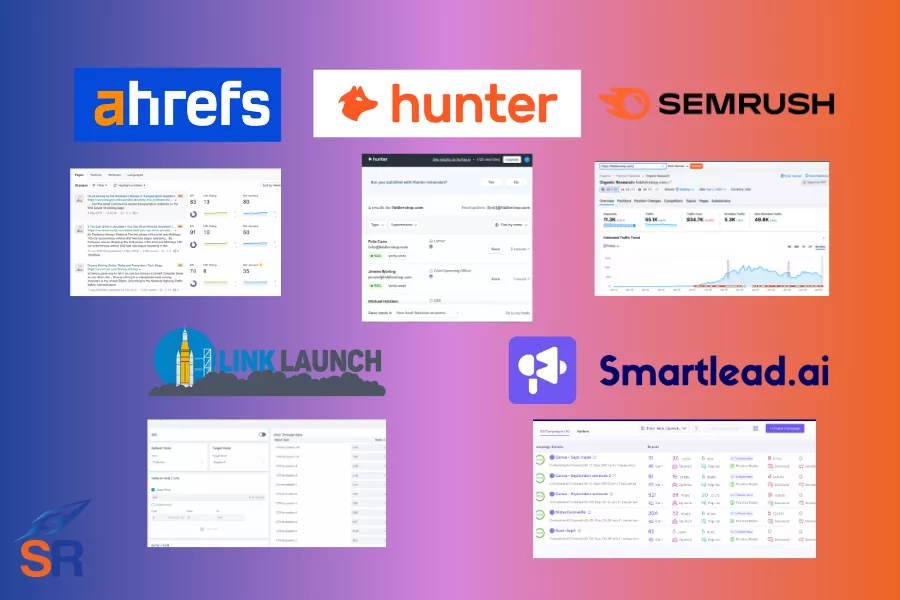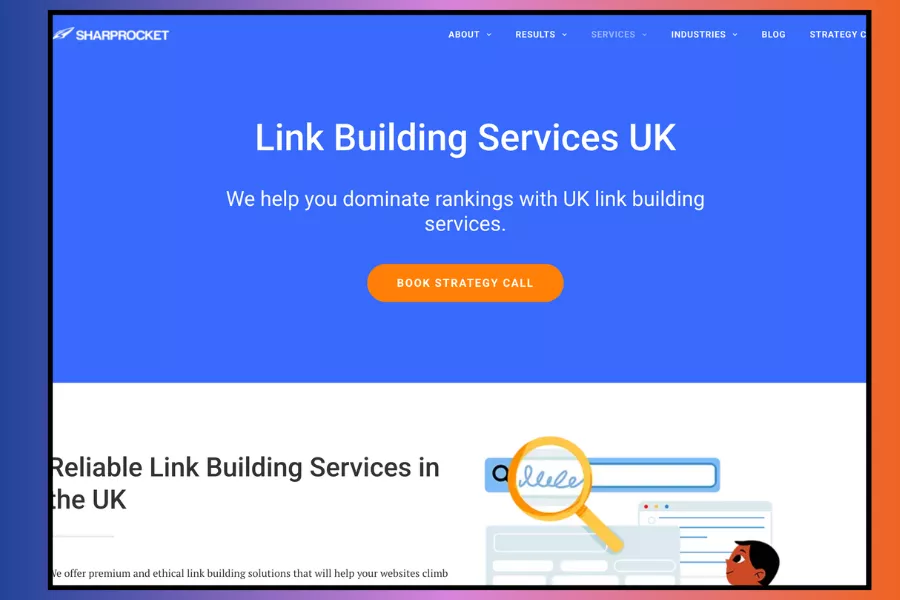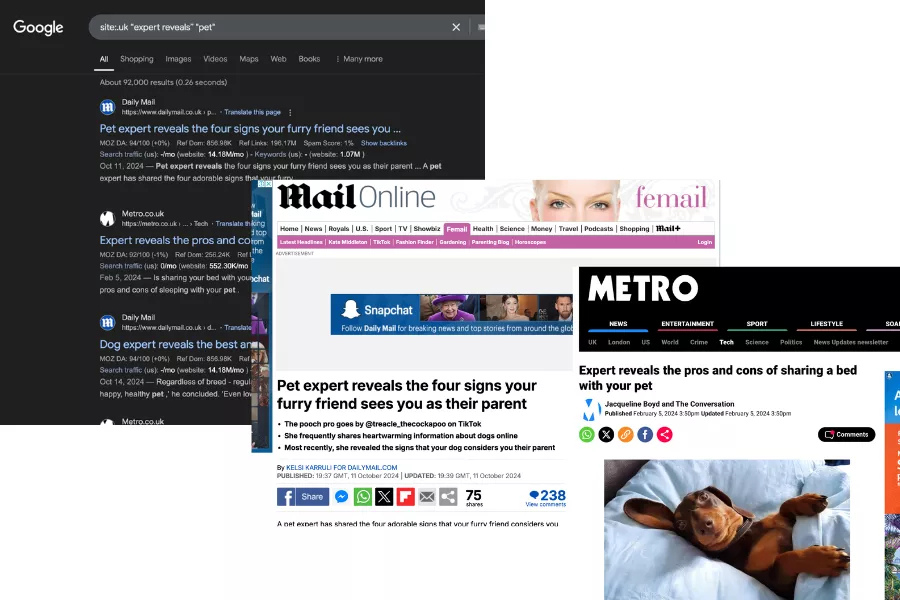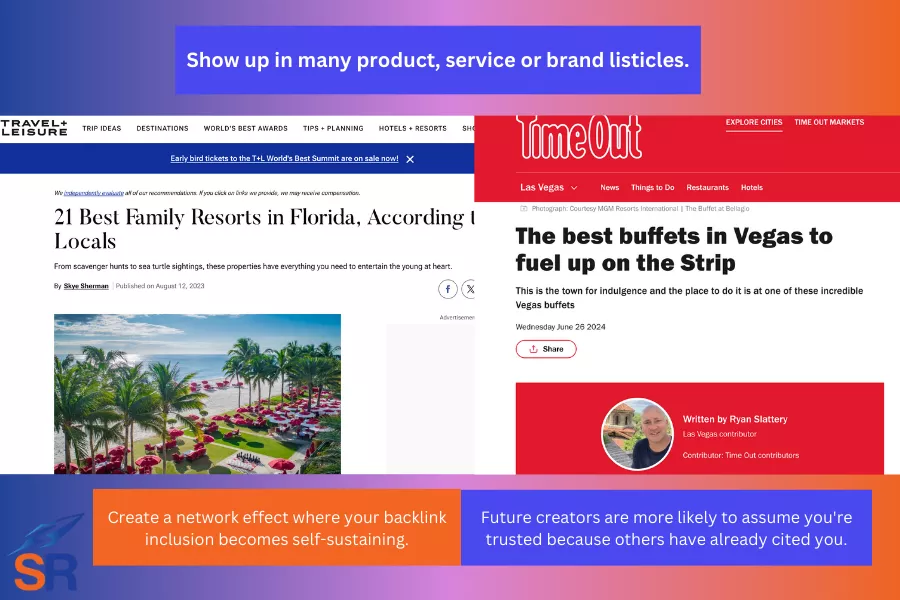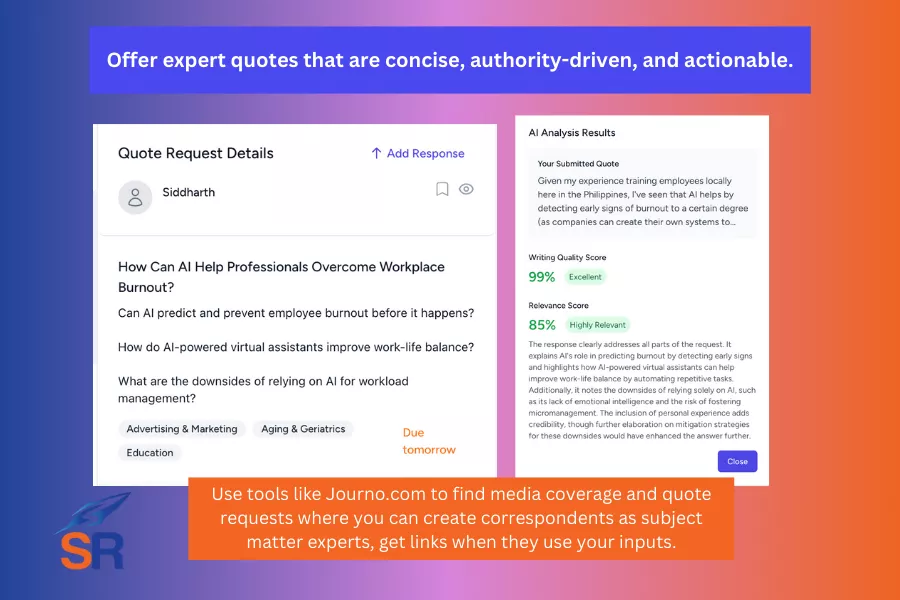HARO link building has been a standard practice for many digital PR and SEO specialists in getting contextual links from trusted and authoritative niche publications and news sites.
I’ve watched this median platform – HARO, from being one of the early entries in the digital PR realm, to now being a go-to platform for agencies and in-house marketers, even more established after being bought by Featured (another digital PR platform focused on expert commentaries/inputs).
Here are a couple of benefits when using HARO as an effective branding tool:
- Automates the entire process of finding expert input requests relevant to your industry (which would take you a couple of hours doing it otherwise – manually prospecting using X, using better Google advanced operators, and other time-labor digital PR prospecting efforts.
- Builds thought leadership of clients’ personas or in-house personalities, which translates to better brand recognition and authority as they represent through their expertise and actual experience.
- Increases the link gap between your site and your competitors through the quality of backlinks you’ll acquire from expert commentaries, as these links aren’t easy to replicate by other methods, such as link insertion, guest posting, etc.
- Strengthens your site’s backlink profile, helping your brand compete for more competitive keywords that require a significant volume of links to appear at the top of Google’s SERPs.
- Flows more trust to your site and could help AI further see your brand as an authority figure in your niche, through an author or expert.
Contents
ToggleHow to Use HARO for Scalable Link Building
Start by signing up on HARO to receive emails listing their daily HARO queries sent twice daily (Afternoon and Evening editions).

From here, the success of HARO link building campaigns lies in how you set up processes to scale your efforts and resources (which mainly comprise your time and thinking through every answer for a given query).
While it may seem ideal to respond to every HARO pitch, you only get a few quality opportunities per industry – so every detail of the pitch is worth optimizing for.
Here are techniques we’ve been tested to work in scaling HARO link building campaigns – for in-house enterprise marketers and SEO agencies:
Maintain HARO Inbox Hygiene
Setting up a HARO account is simple, but the real work happens when you organize all emails. Without a system, your inbox quickly becomes a flood of mixed queries, making it harder to spot high-value media opportunities.
Filtering, labeling, and sorting – as I call it “inbox hygiene” is critical to streamlining the entire workflow of answering queries – prioritizing relevant and urgent ones and responding faster before the deadline closes.
Here are essential Gmail setup tips for HARO link building:
- Create a dedicated Gmail account for HARO responses to instantly have a focused email and avoid cluttering it with personal or team emails (which are often more time-consuming and eye-overwhelming than actually responding to HARO queries).
- Add a second Gmail if needed, especially if you’re handling multiple clients or in-house personas – best to use Google Workspace for agencies.
- Create a professional signature that includes your name, position, company, and a direct link to your website or LinkedIn – this is HARO 101.
- Manage multiple Gmail accounts using Chrome profiles to switch easily (only applicable if you set up several HARO link building accounts)
After setting up your emails dedicated to HARO link building, the next inbox to-do is creating a filtering system.
Here are our inbox filters and efficiency tips:
- Use color-coded labels in Gmail to visually prioritize fast-turnaround opportunities – ultimately helping when juggling multiple Gmail accounts.
- Archive old queries after 48-72 hours to keep your inbox clean.
- Star urgent queries based on relevance, publication familiarity, or specific preferences.
Analyze HARO Queries
One of the biggest mistakes some digital PR and SEO specialists make is the lack of criteria when responding to HARO inquiries. Many treat every query the same, as long as it is topically relevant to their niche – by default, they think it’s worth a good shot for pitching.
But HARO link building goes beyond just niche relevance – it works differently as it relies heavily on the input, the person giving the input (expert), and his/her current background (experience and expertise).
When starting any HARO link-building campaign, check the HARO query to see if it aligns well with the correspondent’s expertise, your ability to present and position expertise, and the person’s relevance.
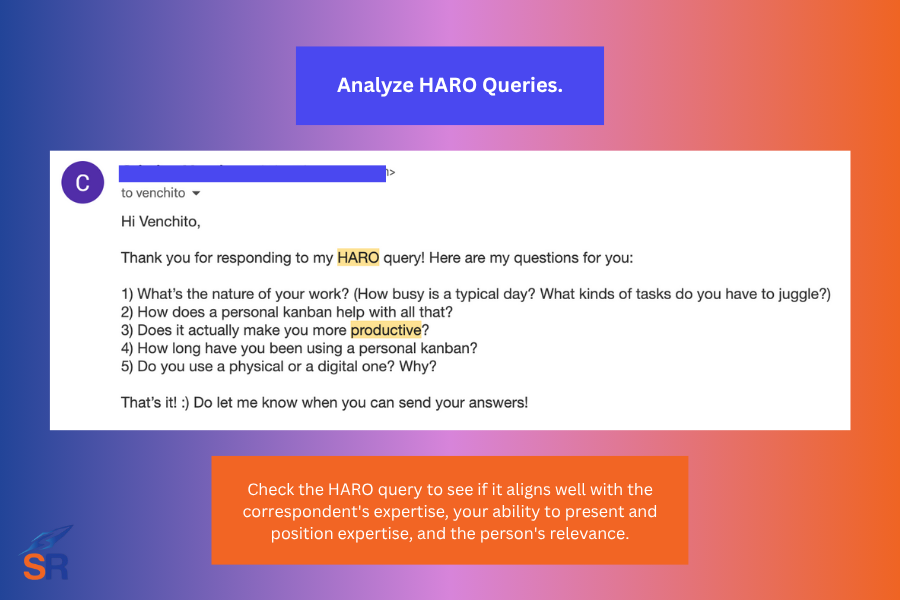
Given that you don’t need to be all-knowing in every realm within a subject matter, but just credible enough to provide insights based on your experience and expertise.
This is where you also need to determine the validity of the opportunity. If a HARO query is too urgent and highly relevant to your expertise, it should be at the top of your list when responding to relevant queries.
Leverage Expert Positioning
Expert positioning is a big part of HARO link building campaigns. It means knowing how to present yourself as the right source for a specific query.
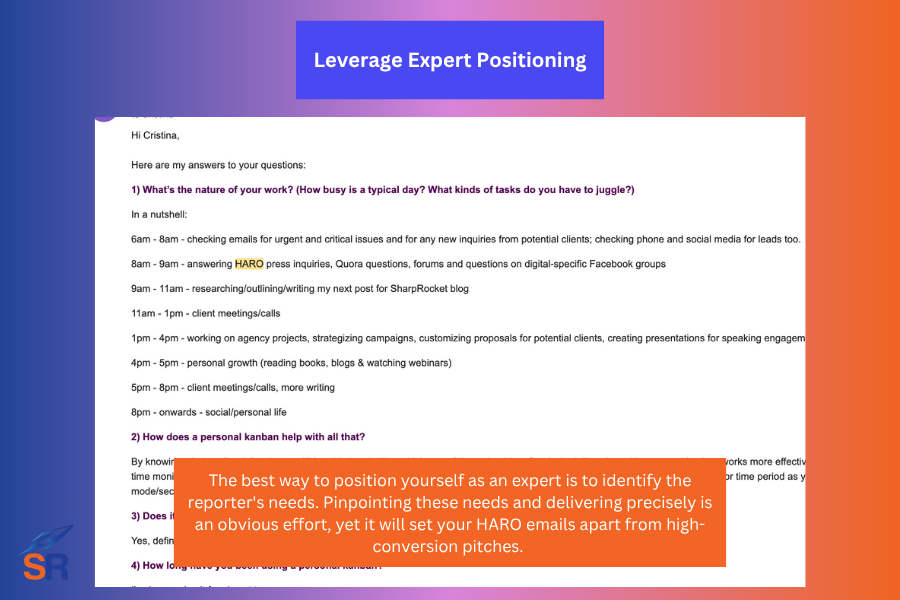
By establishing expertise immediately in your pitches, you can instantly capture the interest of your target journalists or reporters, making it easier for them to consider your inputs.
The best way to position yourself as an expert is to identify the reporter’s needs. Pinpointing these needs and delivering precisely is an obvious effort, yet it will set your HARO emails apart from high-conversion pitches.
Start expert positioning by reading the entire pitch request requirements and assessing the inputs they are looking for. Are they looking for trend insight, a technical explanation, or a personal experience? With these specifics in mind, you can adjust your HARO pitch template later on, which would significantly dictate the conversion rate of your campaign.
Here are a couple more tips if you want to integrate more expert positioning in your HARO response pitches.
- Anchor your introduction to the expert’s actual role (i.e., “I’m the founder of X coffee brand sourcing directly from local farmers”, instead of a vague response like “I run a business”).
- Match the tone and depth of the query. For instance, a personal finance query needs precise numbers or strategy, while a lifestyle topic needs more relatable, first-hand experience.
- Avoid overusing accolades, media mentions, or awards, especially if they are unnecessary to the query. Always keep the pitch aligned with the topic.
- Attribute the input to a real, trusted source (yourself or your client) using actual experience, not recycled insights.
The key to succeeding in HARO link building is figuring out the breadth and depth of your/your client’s expertise early—the wider the scope of knowledge you can provide input for, the more HARO queries you can respond to.
Create Expert-Role Email Templates
Many digital PR and SEO specialists believe templates no longer work. They only dilute pitch quality by being too structured and are often flagged as spammy in someone else’s inbox.
In our decade of doing link building outreach and digital PR campaigns, we can guarantee that it’s almost impossible to scale link outreach without templates. For HARO, a huge part of the outreach campaign comes down to how easily it is to hyper-personalize pitches with less friction using outreach templates.
Unlike other outreach-driven link building campaigns, such as guest blogging, link insertions, and blogger outreach, there are only a few placeholders in outreach email templates for inputs, so you can effectively send semi-personalized emails to hundreds or thousands of link prospects. HARO pitching requires high customization to turn a HARO query into a link placement.
Create a standard email template for each role, correspondent, or thought leader you represent. If you’re working on three digital PR campaigns, you need three separate email templates for each campaign.
Each correspondent represents the expert—you or your client, whom you’ll pitch in on behalf of.
For instance, if you’re corresponding with a coffee machine retailer, you aim to speak on behalf of your client as someone knowledgeable and experienced in the coffee industry. When you filter HARO emails, you will only be looking for expert input requests about brewing methods, machine quality, or maintenance tips.
Use Language That Gets Quoted
Framing your insight like a ready-to-publish quote is one effective way to make your pitch stand out among the hundreds, if not thousands, of emails journalists receive daily. It helps journalists save time sifting through the correct information they need from experts.
The best way to start is by placing the value at the top of the email. After establishing your expert positioning, give the exact “expert input” they request in their HARO queries.
A couple of things that will make your writing more enticing for journalists:
- Use concise, vivid phrasing that sticks.
- Sprinkle in lyrical elements when appropriate – adds flavor and brings your voice as an expert.
- Keep it natural – don’t make pitches impressive, but instead must reflect your confidence and personality.
- Prepare 2-3 go-to phrases you can reuse, giving your pitches a recognizable edge. Just make sure you tweak them as needed.
- Run your pitch through Grammarly – clear writing builds credibility.
Turn Nofollow to Dofollow, Unlinked to Linked
Providing the right expert input takes a lot of work, so it’s vital to ensure that you get the most benefit from your efforts while adding value to journalists.
Track new mentions and links using Ahrefs Alerts, similar link intelligence tools, or Google Alerts. Set alerts to notify you of any new backlinks to your site.
If any links are no-follow, you can reach out to the journalist or reporter and politely request link adjustments:
- For nofollow – ask if they’d consider changing it to dofollow.
- For unlinked – thank them first for using your expert insight, and ask if they could link to your website.
By turning soft wins into real backlinks, you maximize the value of every pitch investment in your HARO link-building campaign.
Do Followups
There are a couple of studies that already show that doing follow-ups helps secure backlinks:
- Sending follow-ups increases the number of backlinks by 40% (Source: Authority Hacker).
- Incorporating at least one follow-up email will achieve a 27% reply rate, compared to a 16% reply to those without follow-ups (Source: Woodpecker).
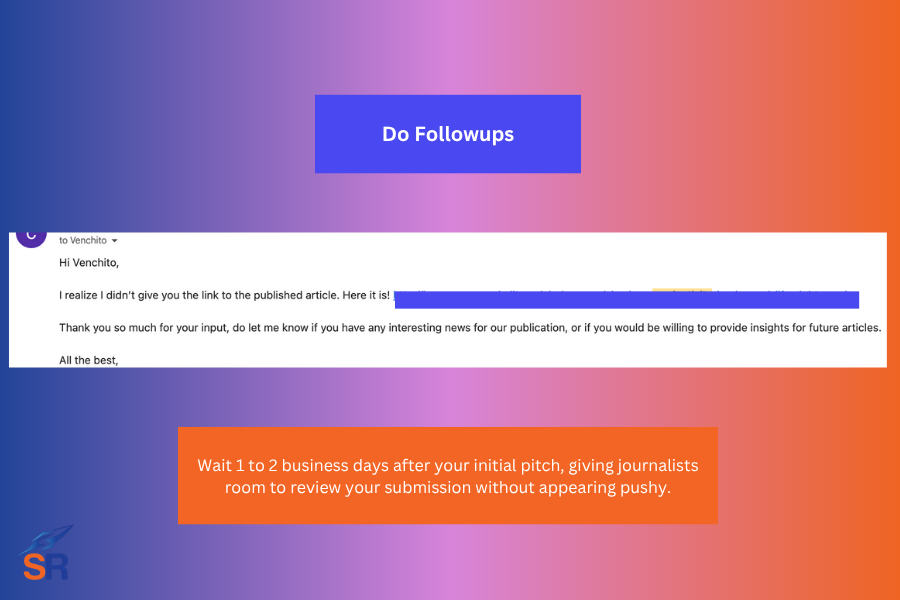
Here’s how to do follow-ups effectively:
- Wait 1 to 2 business days after your initial pitch, giving journalists room to review your submission without appearing pushy.
- Keep your message short and polite.
- Include your original quote or reply for context.
- Track follow-ups using a spreadsheet.
- Know when to stop.
Need help running high-impact digital PR campaigns or scaling link acquisition with expert-driven outreach? Explore our link building and digital PR services.
Written By
Venchito Tampon
CEO and Co-Founder at SharpRocket, a link building agency. With a decade of experience, Venchito has a proven track record of leading hundreds of successful SEO (link builidng) campaigns across competitive industries like finance, B2B, legal, and SaaS. His expert advice as a link building expert has been featured in renowned publications such as Semrush, Ahrefs, Huffington Post and Forbes. He is also an international SEO spoken and has delivered talks in SEO Zraz, Asia Pacific Affiliate Summit in Singapore, and Search Marketing Summit in Sydney, Australia. Check out his other business - Hills & Valleys Cafe.
Reviewed By

Sef Gojo Cruz
COO at SharpRocket, overseeing end-to-end operations, from crafting link building strategies to leading high-performing teams. Previously led SEO initiatives at Workhouse, a digital agency in Australia, and Keymedia, a real estate media company based in New Zealand.
How our LINK BUILDING AGENCY in UK builds 250 links/mo consistently using Predictable Link Building Methodology™…
- Using a SIMPLE and PROVEN system
- Using a SCALABLE strategy
- No private blog networks
- No creepy outreach emails

